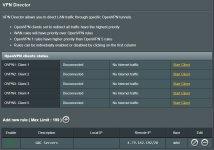TheLyppardMan
Very Senior Member
I ran a test at GRC ShieldsUP! with two different VPN's and each time I tested my connection, I received a failure result, saying that one or more ports were open (I think one of them was Port 443 and I can't remember, but I think there may have been one or two other ports as well). I used Avast Secureline and SurfShark VPN for my tests. Can anyone explain why this might have happened as I thought VPN's were supposed to be more secure? Without any VPN's on my computer, my setup passes all the GRC ShieldsUp! tests.




